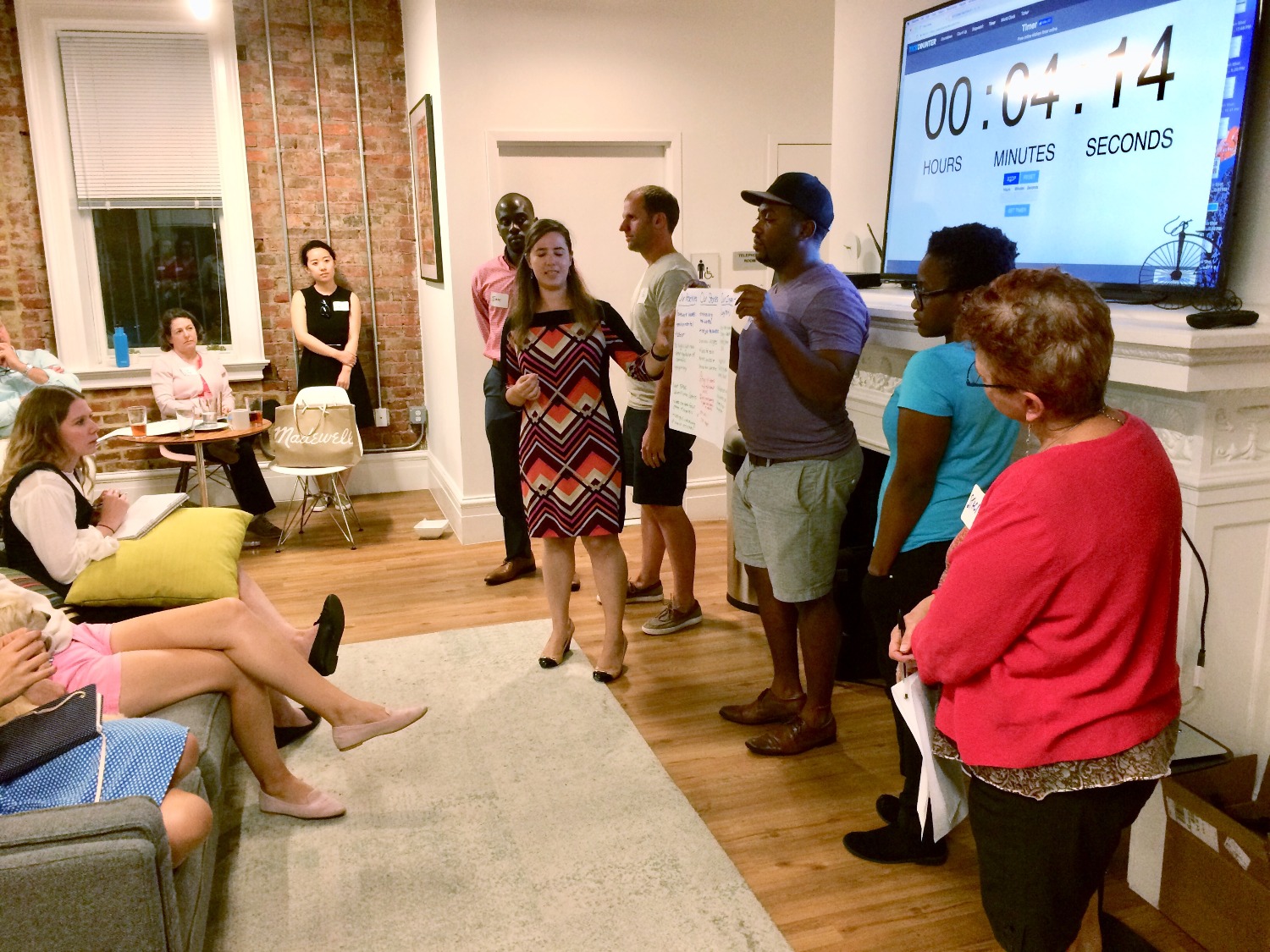Hiring great talent is hard.
We want to hire team players who will deliver value to our organizations, but we have to guess how a candidate might perform based on their past experience and what they tell us in interviews.
We want diversity, but poorly designed hiring requirements and subtle biases often leave employers with a homogenous talent pool to choose from.
At Mission Collaborative, we’ve been developing novel ways for employers and candidates to vet one another more effectively. We work with career changers from all sorts of backgrounds and industries to help them figure out exactly what they want to do next with their careers, then make it happen.
As a part of this process, we wanted to give participants the ability to try out potential career paths before taking the leap. So we designed the “Career Test Drive,” a weeknight workshop that brings together career changers and local employers.
We invite leaders from three startups to come present real world challenges they are currently facing. Participants choose the challenge they are most interested in working on, form teams and use the design thinking process to design then present potential solutions.
Here’s what we’ve learned from hosting four of these workshops with 11 startups:
Seeing potential talent in action is better than reading a resume.
“The [Career Test Drive] was a great opportunity to observe the way that people work together in small teams (something you cannot get from a resume). I am having follow-up discussion with two very talented people that I hope to bring on in the near future,” said Eric Roy, CEO of D.C. drinking water filter maker Hydroviv.
By inviting candidates to work on interesting problems, employers get to see them performing at their best. Evaluating candidates based on their demonstrated skill, teamwork, and ideas goes far beyond what a resume or interview can tell you.
Diverse perspectives yield novel solutions.
“I was completely surprised by the quality of ideas participants provided to my challenge question, many of whom had very little relevant working experience in my industry. Their ideas provided a positive disruption to assumptions we were making and helped me look at solutions through a different lens.” said Katherine Redington, Director of Donor Travel at Elevate Destinations.
Rather than listing out arbitrary application requirements, this model invites people who might not have looked good on paper to show us what they can actually do. As a result, we end up with a room full of candidates with diverse backgrounds and identities.
Trying out your next potential employer is way better than just learning about them.
Giving prospective candidates a taste of what your organization has to offer helps ensure that those who do apply know what they’re getting themselves into and are more likely to stay. Providing exposure to organization offers the chance to meet the people behind the business and get a look at the real challenges they’re facing.
###
Our experiments with the Career Test Drive model suggest that there are better ways to match jobs and job seekers. We firmly believe it’s possible to design scalable ways for employers to see candidates in action, increase the diversity of the applicant pool, and ultimately hire better fit talent that sticks around longer.
We’re excited to continue iterating on the Career Test Drive, and we’re also developing new formats that give career changers and employers a better framework to vet one another.
We’d love to hear from you if you’d be interested in piloting something with us! Reach out to Grant Schroll at grant@missioncollaborative.com.







